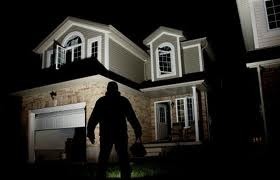Put Social Media to Use to Lessen Chances of Home Break-In

 As you head off to work or other activities in your daily life, do you wonder about the security of your home and possessions?
As you head off to work or other activities in your daily life, do you wonder about the security of your home and possessions?
In a day and age when the economy is troubling, it is not uncommon to pick up the newspaper, turn on the television, or go online and hear about another home invasion, with some turning out very badly for the residents and even sometimes the criminals.
According to a poll conducted last year by MetLife Auto & Homes, 15 percent of Americans use social media to report that they had stepped out of their residence, while 35 percent of Americans (ages 18-34) check in or tweet about their present locale.
Meantime, of those burglars convicted of their crimes, 78 percent noted they had used social media sites to zero in on potential targets, with 74 percent using Google street view to case homes prior to striking.
So, how can homeowners and renters best protect themselves, others living with them, and their possessions all at the same time?
For starters, homeowners and renters should use social media to keep up to speed on crime statistics and know what to look for to prevent home break-ins.
Reports indicate that more police departments are utilizing Twitter and other social venues to inform the public on how to prevent home crimes. By doing so, law enforcement departments nationwide can add millions of officers to their ranks, albeit citizens who watch out for each other’s homes.
Some typical ways social media sites such as Facebook and Twitter can be used to lessen the chances of homes being broken into include:
* Sharing and tweeting crime statistics for specific towns and cities. Residents in those areas more likely to be targeted can use the stats to better protect themselves and their property;
* Law enforcement can post photos of known burglars who are not in jail to social media sites, preparing residents of who may be in their neighborhood. The same holds true for any vehicles criminals may be using;
* Residents can themselves take pictures of suspicious people (those that are doing more than just passing through) in their neighborhoods and post them to social media sites and/or text such images to local law enforcement;
* Residents and local law enforcement can put in play a Facebook neighborhood watch page, allowing area community members to stay informed of activities in their neighborhood. In these cases, those using the page should be required to prove they live in the neighborhood, while information should be available only to area residents (meaning the information is not for the entire public);
* Visit social media sites for the top security providers to get home safety tips, see their latest products and services tied to a home security system, and determine what formula (both electronic and common sense actions) can work best to protect your residence.
In a world where even your home can’t always provide 100 percent security, using social media can bring home a better sense of protection.
Photo credit: monitorsurveillance.com
[image error]



